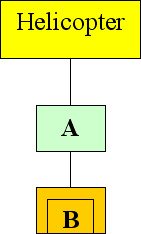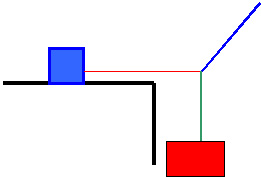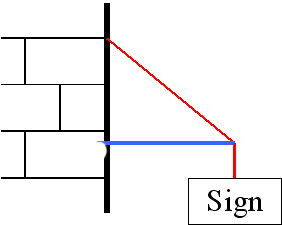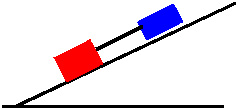|
Supplementary Problems 2 - Forces Follow these general steps
to solve the problems below. F-1 A box weighing 20 N rests
on a horizontal surface. The coefficient of static friction is
.4; the coefficient of sliding friction is .2. F-2 A hockey puck leaves a
player’s stick with a velocity of 10 m/s and slides 40 m
before coming to rest. Find the coefficient of friction between
the puck and the ice. Extended
solution F-3 A large box (M = 50 kg) rests on a horizontal surface where u = .6. What minimum force is necessary to cause the box to move a) by attaching a rope which is pulled horizontally to the right? b) by attaching a rope that is pulled 30 degrees above the horizontal? c) by pushing down and to the right 20 degrees below horizontal F4. A 1000 N block is supported at a common point on the block by two cables. Cable A, attached to the left side, makes an angle of 50 degrees with the vertical. Cable B on the right makes an anagle of 30 degrees with the vertical. Find the tension on each cable. F-5 . A crane is used to lift a heavy load. (Ask for a drawing.) Determine the tension (T) on the cable and the compression (C) of the boom. Assume mass of load is 103 kg. F-6 A woman who weighs 540N (about 120 lbs) steps into an elevator car and immediately stands on the ever-present bathroom scale. What does the scale read if a) the car is at rest? b) the car is accelerating upward at 3 m/s^2? c) if the car is moving upward with a constant speed of 3 m/s. d) if the car is acceleration downward at 3 m/s^2. (Hint: before beginning this problem, determine exactly what a bathroom scale measures.) F-7 An inclined plane is tilted
37o above the horizontal. The coefficient of friction between
th plane and a block sliding on it is .4. If the block is projected
up the plane with a speed of 12 m/s, a) how far up the plane
does it go? b) What is the elapsd time before stopping? c) Does
it slide down again? How do you know? d) If it does slide down,
how does the travel time up compare with the travel time down?
e) What change(s) would you make to ensure that the block did
not slide down? Show the mathematical impact of your changes
on the numbers. F-10 A crate rests on the back of a truck where the coefficient of friction is .4. The truck is initially at rest but accelerates to some speed. What is the largest acceleration that the truck can have without causing the crate to slip? F-10 A block (m = 10 kg) is dragged across the floor by a force of 100 N applied through an attached cord. The cord makes an angle of 25 degrees with the horizontal. The block and surface have a coefficient of friction of .3. a) Find the value of the normal force. (Hint: It is not mg.) b) Find the x-component of the applied force. c) Find the value of the frictional force. d) Find Fnet in the x-direction. e) Does the block accelerate? If yes, what is the value of the acceleration?
F-12 Block B (M = 10 kg) rests on a table where u = .4. Blocb A is attached to to block B by a cord that is draped over a massless, frictionless pulley at the left side of the table. by similar arrangement, block C is attached at the right of block B. What must be the mass of block C if B is to accelerlate to the right at 4 m/s^2? F-13 A block (m = 5 kg) is placed on an inclined plane (theta = 37^o). There is friction. (u = .4) a) What is the magnitude and direction of a separate force applied to the block to cause it to slide up the plane at a constant speed? b) What is the magnitude and direction of a separate force applied to the block to causes it to slide down the plane at a constant speed? F-14 A block is projected up a 40^o incline at some speed. It eventually stops. For what range of values for u will the block stop and not move again?
15. See figure 15. It shows the blue block (m = 5 kg) resting on a surface where u = .5..What is the smallest possible value for the red mass that will cause the blue mass to slip. Note that the blue cable makes an angle of 30^o with vertical. 16. See figure 16. The sign iss held up and away from the building by the diagonal cable and horizontal boom. Find the force on each. (Note that the red cable makes an angle of 30^o with vertical.) 17. See figure 17. Two blocks are at rest on a 37^o incline. Red ( m = 2 kg, u = .4) and blue (m = 1 kg, u = .2) are connected by a rigid rod. The blocks are released. Find the acceleration if a)red precedes blue; b) blue precedes red. see the applet at http://canu.ucalgary.ca/map/content/energy/energy_cons/simulate/fletcher/applet.html
this page was last edited 01/23/09
|



